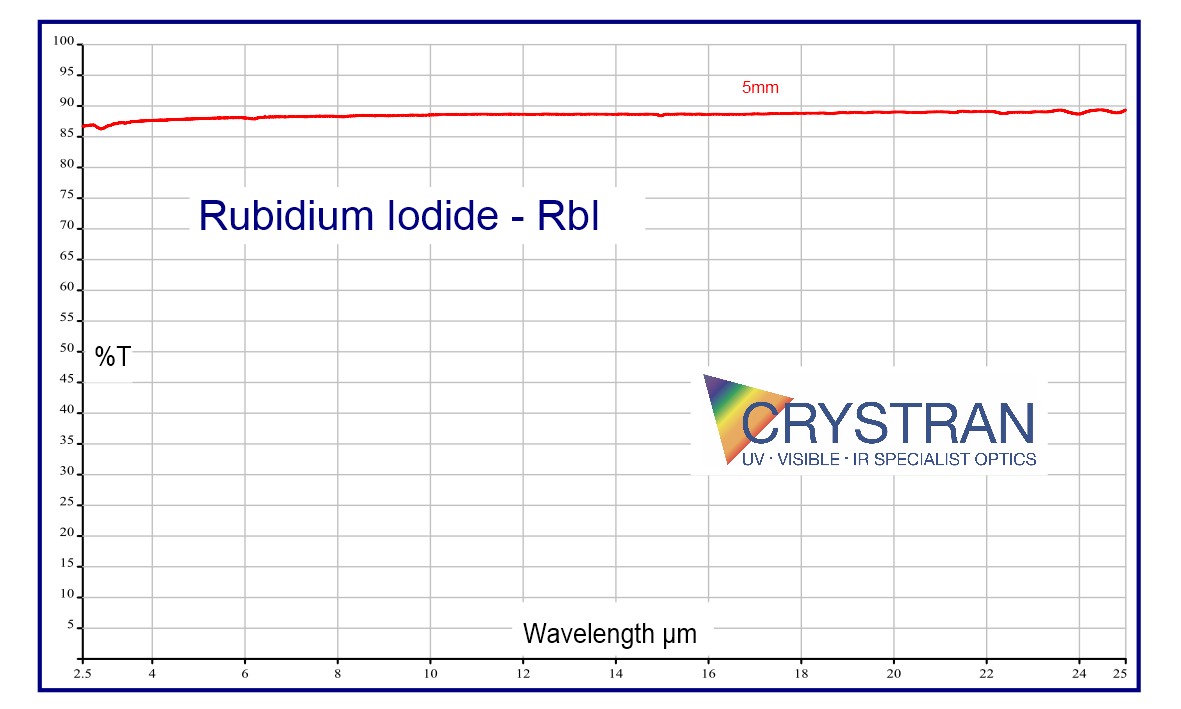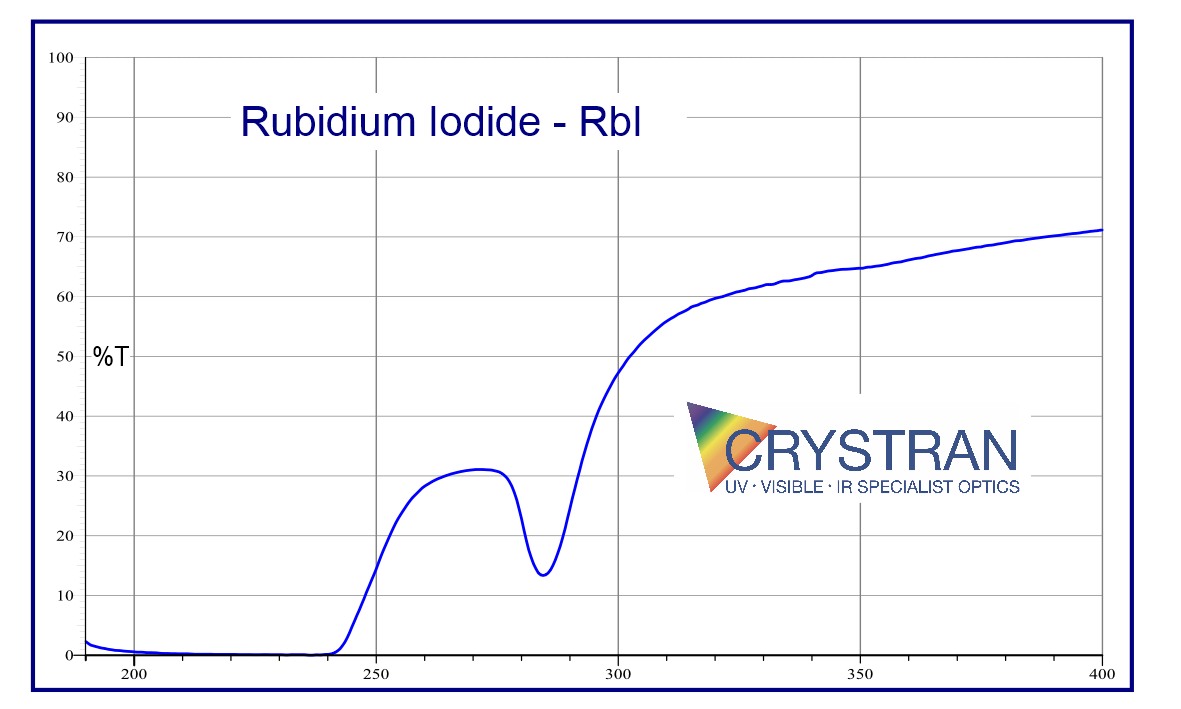

Rubidium Iodide RbI
Transmission Range
0.3 to 50 μm
Refractive Index
1.609 at 10 μm (1)
Reflection Loss
10.4% at 10 μm (2 surfaces)
Absorption Coefficient
n/a
Reststrahlen Peak
n/a
dn/dT
-56 x 10-6 K-1
dn/dμ = 0
n/a
Density
3.55 g/cc
Melting Point
642°C
Thermal Conductivity
9.9 W m-1 K-1
Thermal Expansion
39 x 10-6 K-1 at 283K
Hardness
n/a
Specific Heat Capacity
247 J Kg-1 K-1 at 283K
Dielectric Constant
n/a
Youngs Modulus (E)
n/a
Shear Modulus (G)
n/a
Bulk Modulus (K)
11 GPa
Elastic Coefficients
C11 = 27.6 C12 = 3.7 C44 = 2.79
Apparent Elastic Limit
n/a
Poisson Ratio
n/a
Solubility
152g/100g water at 23°C
Molecular Weight
212.37
Class/Structure
Cubic FCC, NaCl, Fm3m, (100) cleavage
| µm | No |
|---|---|
| 0.25 | 2.059 |
| 0.35 | 1.736 |
| 0.50 | 1.663 |
| 0.80 | 1.631 |
| 1.00 | 1.624 |
| µm | No |
|---|---|
| 2.00 | 1.615 |
| 5.00 | 1.612 |
| 10.0 | 1.609 |
| 20.0 | 1.596 |
| 30.0 | 1.573 |
| µm | No |
|---|---|
| 40.0 | 1.537 |
| 45.0 | 1.514 |
| 50.0 | 1.486 |
| 55.0 | 1.486 |
| 60.0 | 1.411 |
Rubidium Iodide is produced by the sealed-ampoule Stockbarger technique. RbI is the most deliquescent of the rubidium salts.
REFERENCES:
(1) Handbook Optical Constants, ed Palik, V3, ISBN 0-12-544423-0

